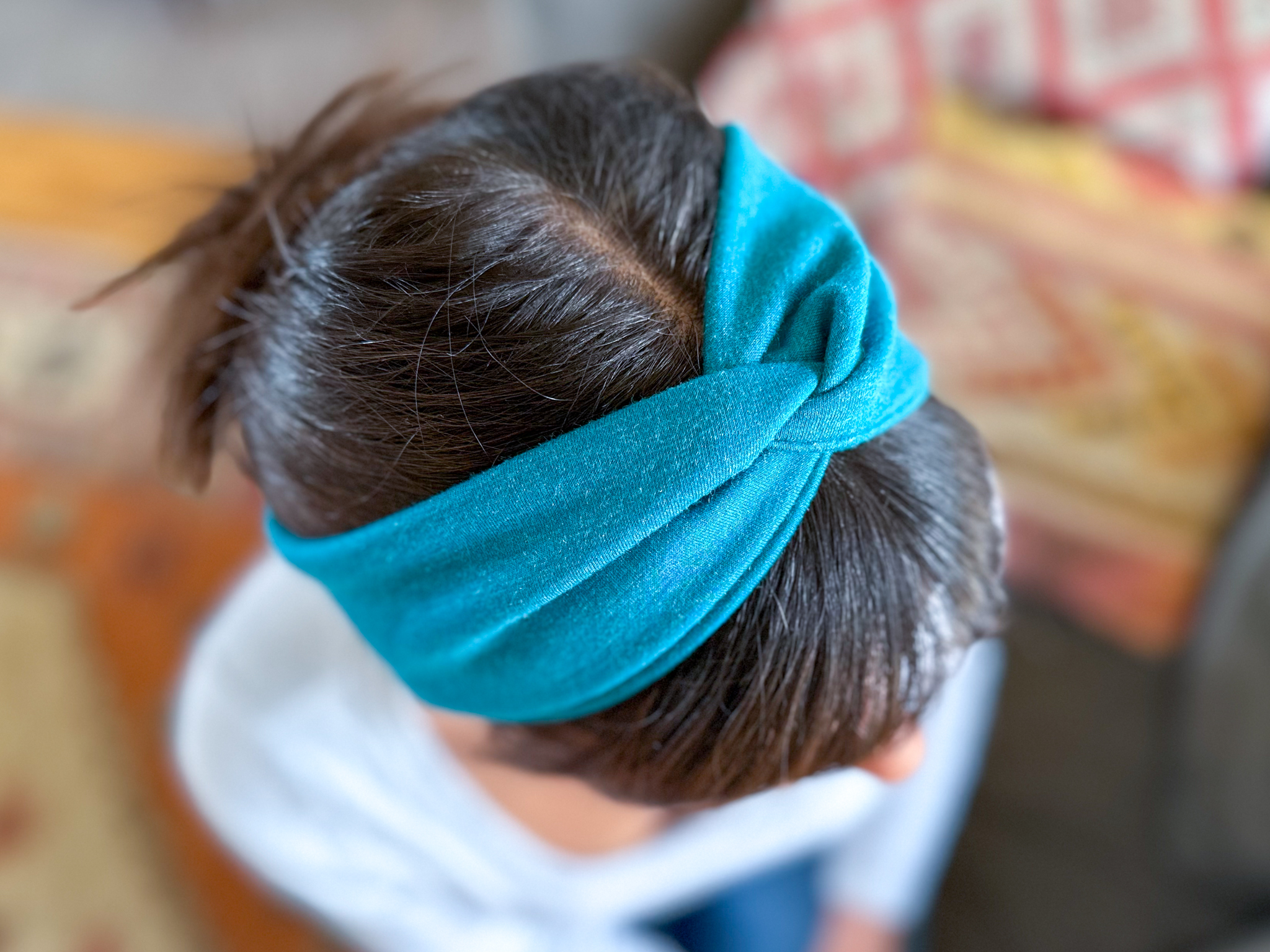When you sew, why do you backstitch when you begin and end a seam?
Most of you backstitch because someone on your sewing learning path said you should do that to keep your seams from coming apart.
Well, now, I want you to forget that reverse button and listen to some common sense stuff!
When you backstitch, you go forward, back and forward again, right? That puts 3 layers of stitching at the beginning and end of every seam.
Even if you back up straight, which is almost impossible to do, 3 layers of stitching creates a lot of bulk in these areas. This is really bad on thin, sheer fabrics and ugly, too.
That part of the seam doesn't open out flat or press well, either. It helps to make lumpy corners, too. Who needs lumpy corners? Gives the garment that "homemade" look! Yuk!
OK, I can hear you say that you don't backstitch. You either hand tie your threads or sink or drop a knot with your machine by stitching in place for several stitches.
That's fine, but then you trim the seam allowance down and cut off that knot, right? So why waste the time to tie or sink knots?
So, you are asking, "What is the trick to keep seams from coming apart if you don't backstitch?"
Try this! It just makes sense!
For about 1" - 1-1/2", begin and end all your seams with "short stitches."
Instead of pressing the reverse button to backstitch, set your stitch length down to make 18-20 short stitches per inch.
On some machines, that is number 1. You will have to check it on yours. See below how to do that.
Short stitches secure your seams and eliminate all bulk even after you trim the seam allowance. This makes much neater, flatter corners. Everyone wants flat corners, right?
After you stitch the seam, press it open before you trim anything off the seam allowance. It is easier to press a wider seam allowance open than a tiny one. You won't burn as many fingers that way.
Besides, pressing seams open first will give you a much sharper, cleaner, more professional looking finish.
All seams should be "sandwiched pressed" (both layers together) to set the stitches and then pressed open with the tip or point of the iron right along the stitching line, then pressed flat open.
Notice, I said "pressed" - that's a lifting, lowering motion - not "ironed" - that's a sliding, stretching motion.
Now, if the seam allowances are going to lay one on top of the other in the finished garment, you would then press them to one side. But, when your trim, make sure you trim one of the seam allowances a little less than the other one to create a staggered or layered effect. This is often called, "grading the seam allowance."
The wider seam allowance should always be the one that lays next to the outside of the garment. This greatly reduces bulk in seams.
You can sometimes achieve this effect by angling your scissors when you trim both seam allowances together. I generally prefer to use my "duckbill" scissors for this job.
Here is a tip if you don't know where to find 18-20 stitches on your machine.
To easily find out how many stitches per inch is represented by each number on your sewing machine's stitch length indicator, try this technique:
Thread your sewing machine with a dark colored thread.
Pin 2 small pieces of light colored cotton broadcloth fabric together one on top of the other.
You want the dark thread on the light fabric so you can see your stitches really well. You want 2 layers of fabric because your seams are usually made with 2 layers of fabric.
Draw two 6" long lines exactly 1" apart on the top layer. Use a dark pen or pencil for this. It should be a thin line, not a wide, fat line.
Set the stitch length on your sewing machine for the highest number. Example: No. 4 or 6 or whatever it is.
Beginning about 1/2" above the top line, stitch across the 2 lines and beyond the bottom line about 1/2".
Now, count the stitches between the 2 lines that are 1" apart. Example: 8 stitches.
Write the Stitch Length Machine Number (Example: 4) and the number of stitches per inch beside it (Example: 8). I write mine on the fabric test sample like this: #4=8.
Move over on the fabric and select the next number on your machine and repeat the process until you are down to the lowest number.
If you can't see the stitches well enough to count them accurately, use a magnifying glass.
Keep this test sample in your sewing notebook for reference.
When you learn where your stitch length must be set to have 18-20 stitches per inch, make a note or mark it until you remember to reduce your stitch length each time you begin and end a seam.
It will take a while to break your old habit of backstitching, but you will see better results with short stitches.
Try it! It just makes sense!
=-=-=-=-=-=-=-=-=-=-=-=-=
©2005 Marian Lewis – All Rights Reserved
1st Step To Sewing Success
Marian Lewis is a sewing instructor and the creator of an amazing new fitting method for hard-to-fit sewing folks.
In her ebook, "Common Sense Fitting Method For Hard-To-Fit Sewing Folks Who Want Great Fitting Skirts And Pants", find out step-by-step WHAT you really need, WHERE you really need it and HOW to apply that to a commercial sewing pattern.
For more information, go to: => http://www.1ststeptosewingsuccess.com/fitting.html
Marian is also the author of other eBooks related to sewing including, "Sew A Tee Pee And Accessories For Your Tribe Of Kids" where she teaches basic sewing techniques while you have fun doing it!
To learn more, go to: => http://www.1ststeptosewingsuccess.com/sewing.html
To discover sewing and fitting secrets to achieve sewing success, follow the link: => http://www.1ststeptosewingsuccess.com/
Article Source: http://EzineArticles.com/?expert=Marian_Lewis [http://ezinearticles.com/?Stop-Backstitching-When-You-Sew!--Eliminate-That-Homemade-Look!&id=90821 ]http://EzineArticles.com/?Stop-Backstitching-When-You-Sew!--Eliminate-That-Homemade-Look!&id=90821
















































.JPG)




Hi Trudy, great blog! love all the sewing tips and how to's. Cheers.
ReplyDeleteHey Ms.T. This was some interesting info! Hope we get to sew something together soon!
ReplyDeleteI am going to try this!
ReplyDelete